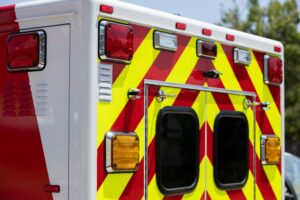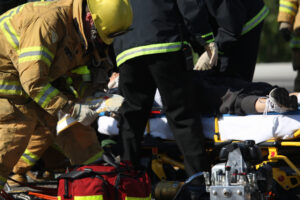This week marks one year since a Bell 206L sightseeing helicopter crashed and burst into flames in Sevier County, killing all five people on board. Four of the victims were alive after impact, suggesting that the crash was survivable, if not for the fire. One witness told reporters that he saw someone aboard the chopper roll out onto the ground and was “burning alive,” but there was nothing anyone could do to help.
Although the wreckage has been removed from the crash site, the investigation is still ongoing. The National Traffic Safety Board (NTSB) has looked into a number of issues, including weather conditions at the time of the crash, maintenance records of the helicopter, how the chopper was loaded, and pilot records. One question that still remains is – what role did the fuel system play in the deaths?
There have been concerns for decades over helicopter crashes that involved fuel tanks erupting on impact.
The NTSB estimates that 4,700 of the more than 5,500 newly built helicopters do not have crash-worthy fuel systems. That means that the nearly 85 percent built without a crashworthy fuel systems could rupture on impact, spilling fuel and giving occupants less time to escape a post-crash fire. Information from the agency showed that on a national basis, a total of 175 fatal crashes in which the helicopters burned afterwards have occurred since 1994. At least 82 of the people aboard during those crashes died as a result of the fire and not the crash.
Despite the statistics, regulators have never fully fixed the problem.
In 1994, the Federal Aviation Administration (FAA) began requiring crash resistant fuel systems for new helicopters – except there was (and still is) a loophole. Helicopters in which the FAA certified the model prior to 1994 are exempt from the updated fuel safety standards. In other words, if a plane was certified in 1977, then the same model built today would not need to meet current regulations. The Bell 206L was built in 1977.
According to a retired CEO of Robertson Fuel Systems, installing the crash-worth fuel system on a new helicopter increases the manufacturing cost by 1% to 2%. Yet, some manufacturers continue to put profits over safety until faced with the consequences of their poor designs through the civil justice system. The time to make fuel tanks safer is now. The technology is already there; it has been for many years.
As the victim’s families wait for the NTSB to determine a cause, two new lawsuits have been filed. Together, the suits seek $250 million in damages from those connected to the aircraft’s operation.
Mark Bello is the CEO and General Counsel of Lawsuit Financial Corporation, a pro-justice lawsuit funding company.
@thumbnail.jpg)
Experienced attorney, lawsuit funding expert, certified civil mediator, and award-winning author of the Zachary Blake Legal Thriller Series. The series features super-trial lawyer Zachary Blake handling "ripped from the headlines" legal and political issues of the day. The series currently consists of Betrayal of Faith, Betrayal of Justice, Betrayal in Blue, Betrayal in Black, and Betrayal High, with a sixth Zachary Blake novel due out later this year. To learn more about these topical social justice legal thrillers. please visit markmbello.com. Mark is a member of the State Bar of Michigan, a sustaining member of the Michigan Association for Justice, and a member of the American Association for Justice.










Comments for this article are closed.